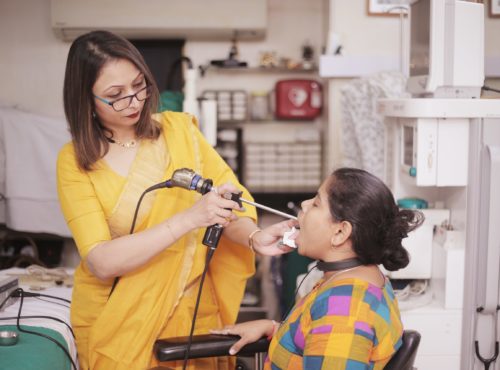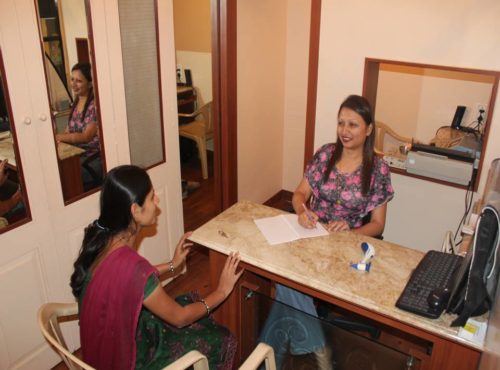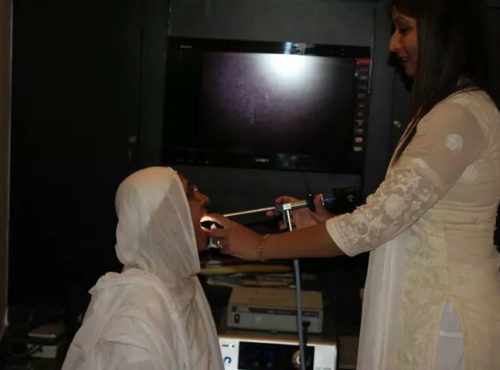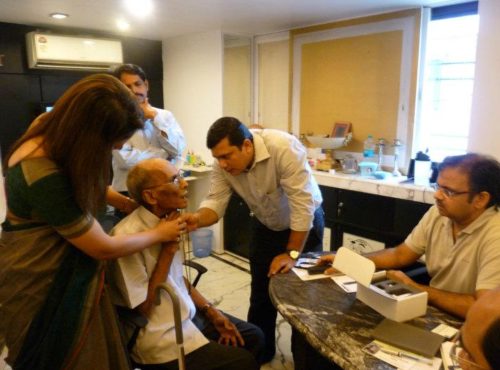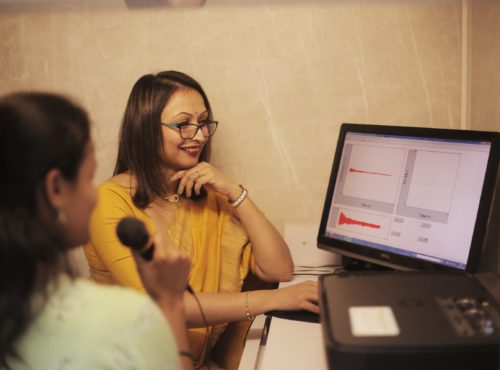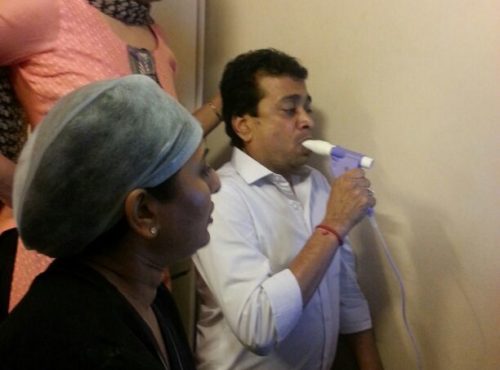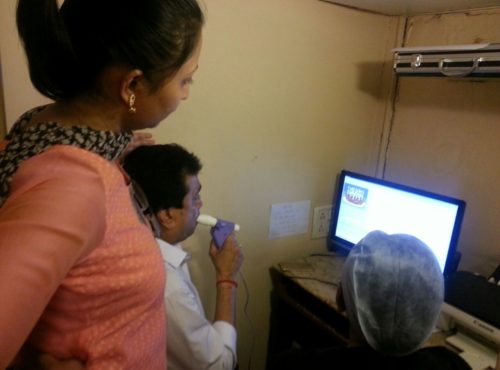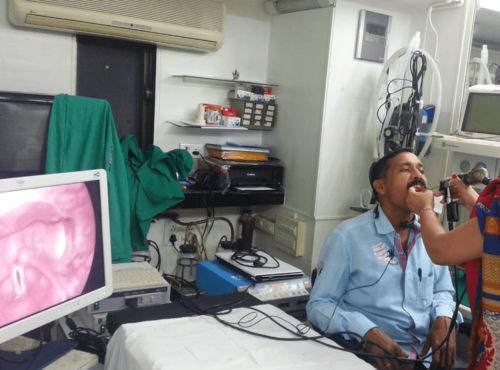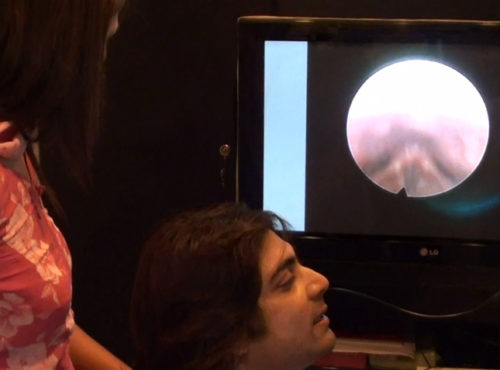It is highly recommended that one should consult the Voice Therapist and Laryngologist even for a slightest voice change. Early intervention is always better.
1. Rigid laryngoscopy :
A rigid scope is used while examining the larynx .It provides magnified view of voice box ,bu because the tongue needs to be held by the examiner , understanding movements of the vocal cords while the patients sings or speaks is not possible .
2. Flexible laryngoscopy :
A flexible scope is passed through the nose to the back of the throat .Here a fiberoptic technology is used to see the vocal cords .It allows examination of the voice box in action while (speaking or singing ). Sometimes , a local anaesthetic spray is applied to patient’s throat and on the entrance of the the nose to make the area numb. The numbness lasts for about 30 minutes.
3. Stroboscopy :
When we speak, our vocal cords vibrate at a great speed i.e. more than 100 cycles per second or more. This is too fast to be seen by naked eyes. In order to be able to examine the vocal folds more carefully, a special light source called strobe light is used in Laryngoscope. It sends off a very bright and very short flash of light. The technique is to repeat the strobe flash at the exact same rate that the vocal cords are vibrating, so that they will appear “Frozen” in time, by adjusting the strobe firing rate. The vocal folds may then be made to appear to move in slow motion on the screen, making it easy for examiner and the patients to see the vocal cords and understand the movements better.
It is a computerised Vocal Assessment which provides us with the ability to analyse and display acoustic and EGG features of a vocal sound. A wide range of voice parameters (jitter, shimmer , NNE, etc ) along with graphic displays (Spectrograph , Fundamental frequency , Intensity etc) can be obtained and assessed. It is an important assessment and therapeutic tool in Voice Therapy .
It is most common of the pulmonary function test (PFTs), measuring lung function, specifically the amount (volume) and /or speed (flow) of air that can be inhaled and exhaled. It is an important tool used for generating pneumatographs, which are helpful in assessing conditions such as asthma, pulmonary fibrosis , COPD etc.
Rhinomanometry is a simple computerized test that assesses nasal airflow obstructions by measuring pressure and flow during the normal inspiration and expiration of our breathing cycle.
